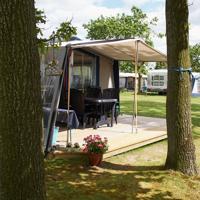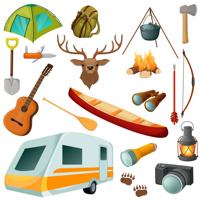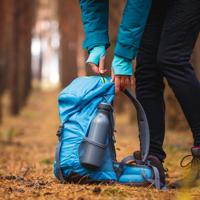Navigation & Safety Equipment for Sustainable Camping
A sustainable guide to navigation and safety equipment for outdoor adventures.
When it comes to sustainable camping, navigating the great outdoors responsibly while ensuring safety is key. Let’s delve into how you can gear up for your next adventure with equipment that respects both nature and enhances your camping experience.
The Essence of Sustainable Navigation
Navigating through nature without leaving a footprint is becoming a vital part of camping. Traditional methods, like using a physical map and compass, are incredibly energy-efficient and eco-friendly.
Compasses and Maps
A reliable compass and a waterproof topographic map are your best friends for sustainable navigation. Not only are they devoid of batteries, but they also offer everyone in the group the chance to learn valuable skills.
To minimize environmental impact, you can invest in a compass made from recycled or sustainable materials. Some brands now offer maps printed with biodegradable ink on recycled paper.
GPS Devices with Renewable Power Options
For those who prefer a bit more tech in their navigation toolkit, GPS devices can be sustainable too. Look for models that are solar-powered, reducing dependency on disposable or non-renewable batteries.
Solar-Powered GPS: Solar panels can be an excellent choice on sunny trips. They offer unlimited power on sunny days, keeping your devices charged without plugging into an electrical grid.
Hand-Crank Chargers: For less sunny climates, a hand-crank charger can serve as an alternate sustainable power source.
Safety Equipment for Eco-Conscious Campers
While safety is paramount, it’s worth thinking about the environmental impact of the equipment you take. Here’s how you can prioritize safety with a sustainable mindset.
First Aid Kits
Your first aid kit is non-negotiable. Pick ones that are made with eco-friendly materials and ensure any waste from the kit, especially medications, are disposed of responsibly.
Sustainable Lighting
Lighting is a crucial safety feature, and there are several eco-friendly options available:
-
LED Lanterns: LED lights consume less power than traditional bulbs. Look for rechargeable lanterns to minimize waste.
-
Solar Headlamps: These harness the sun’s energy during the day, providing sustainable lighting at night.
Emergency Shelters
Portable shelters that protect against harsh weather are invaluable. Those designed with recycled materials or using sustainable production practices are preferable. Lightweight options made of recycled polyester or other eco-friendly fabrics are increasingly available.
Learning From the Experts
For more practical tips, resources, and products, the Appalachian Mountain Club provides valuable guidance on sustainable outdoor practices here. They offer insights into navigating the wild responsibly and safely, aligning perfectly with sustainable camping goals.
Staying Connected
While disconnecting from modern life is part of camping’s allure, carrying a sustainable satellite communication device can be wise. Modern versions are rechargeable via solar energy or kinetic energy to minimize their environmental impact.
With each piece of equipment, consider its lifecycle and environmental impact. The goal is to blend outdoor enjoyment with conservation efforts, ensuring natural landscapes thrive long after the campfire embers have faded.

Solar-Powered GPS Devices harness sunlight to power navigation and safety features on your outdoor adventures.

A selection of sustainable camping accessories and miscellaneous gear that support a greener outdoor lifestyle.

Eco-Friendly Multi-Tools combine functionality with responsible design for outdoor enthusiasts.

Tents & Shelters crafted with sustainability in mind for eco-conscious campers.

A guide to selecting eco-friendly backpacks and bags for camping.

Sleeping Gear offers a sustainable approach to staying comfortable under the stars.

Eco-Friendly Cookware provides sustainable cooking tools designed for environmentally mindful camping.

Sustainable first aid kits minimize environmental impact while ensuring safety in outdoor adventures.